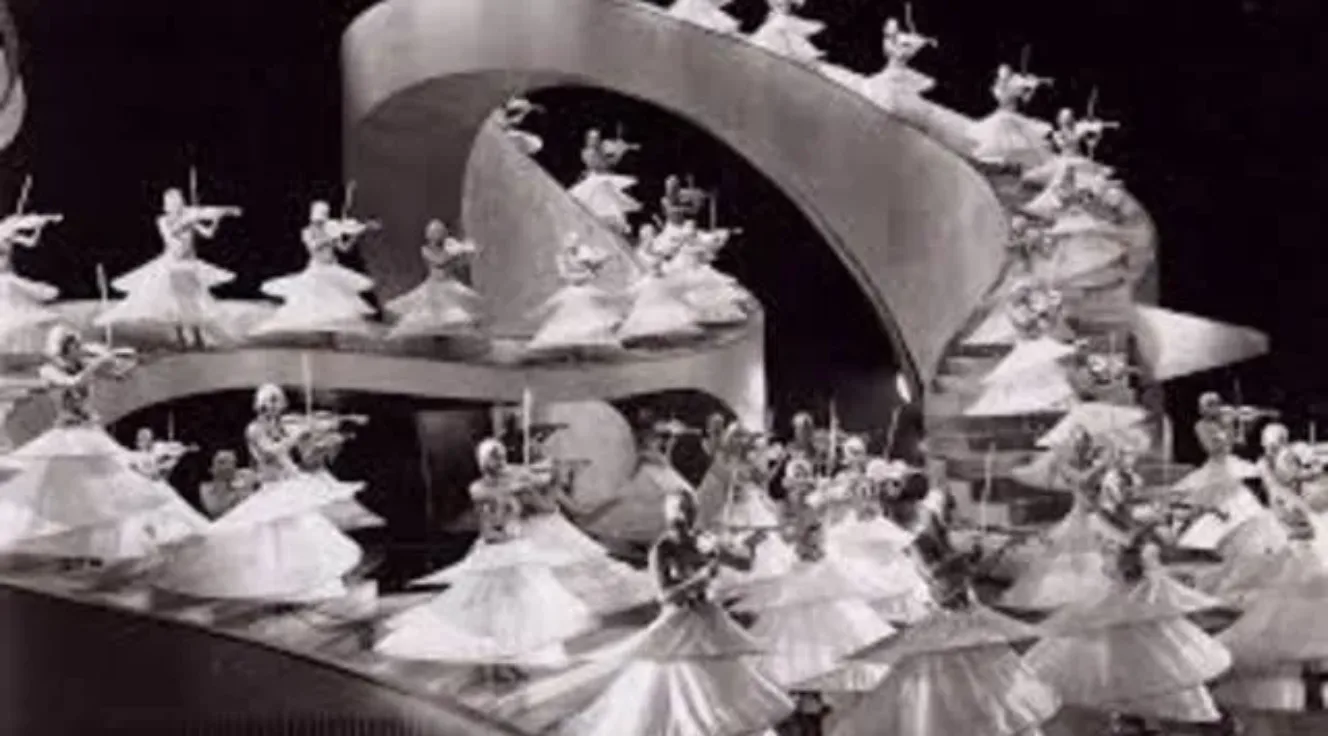We seek to better understand the value of individual variance in unison-driven choreography—an aesthetic of mess—through close analysis and a comparison to computerized unison, in which the performance of a single dancer can be duplicated into an entire corps.
In late July and early August, Sarah Mininsohn and Kayt MacMaster participated in a remote micro-residency through SloMoCo, an organization that combines artistic and technological disciplines for the purposes of innovation and creative research. Their project began as a research collaboration with MV Lab, a research lab in UIUC's Media and Cinema Studies department, which involved learning and analyzing dances in Gold Age Hollywood musicals. Both Kayt and Sarah became particularly interested in the large group numbers choreographed by Busby Berkeley.
Their SloMoCo micro-residency is an initial exploration in using movement visualization technology to better understand the components and aesthetics of unison dance. Looking back on Berkeley's approach to dance making from a 21st century, post-modern perspective, they are asking: What is the value of (deliberate and unintentional) human error to artistic practices? How can the pursuit of Berkeley-esque unison give us insight into new choreographic and pedagogical methods? Given the machine-like precision of Berkeley's dances, could movement visualization technology be a useful present-day approach to this investigation?
